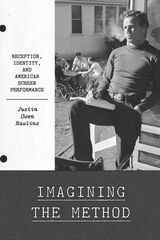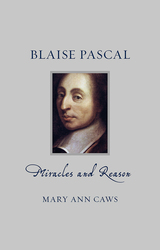
Caws takes us back to Pascal’s youth, when he was a child prodigy first engaging mathematics through the works of mathematicians such as Father Mersenne. She describes his early scientific experiments and his construction of mechanical calculating machines; she looks at his correspondence with important thinkers such as René Descartes and Pierre de Fermat; she surveys his many inventions, such as the first means of public transportation in Paris; and she considers his later religious exaltations in works such as the “Memorial.” Along the way, Caws examines Pascal’s various modes of writing—whether he is arguing with the strict puritanical modes of church politics, assuming the personality of a naïve provincial trying to understand the Jesuitical approach, offering pithy aphorisms in the Pensées, or meditating on thinking about thinking itself.
Altogether, this book lays side by side many aspects of Pascal’s life and work that are seldom found in a single volume: his religious motivations and faith, his scientific passions, and his practical savvy. The result is a comprehensive but easily approachable account of a fascinating and influential figure.
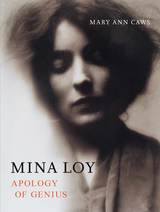
Mina Loy was born in London in 1882, became American, and lived variously in New York, Europe, and finally, Aspen until she died in 1966. Flamboyant and unapologetically avant-garde, she was a poet, painter, novelist, essayist, manifesto-writer, actress, and dress and lampshade designer. Her life involved an impossible abundance of artistic friends, performance, and spectacular adventures in the worlds of Futurism, Christian Science, feminism, fashion, and everything modern and modernist.
This new account by Mary Ann Caws explores Mina Loy’s exceptional life and features many rare images of Mina Loy and her husband, the Swiss writer, poet, artist, boxer, and provocateur Arthur Cravan—who disappeared without a trace in 1918.
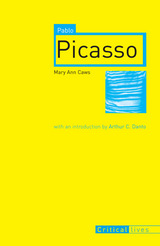
With these words, Pablo Picasso described the revolutionary methods of painting and artistic perspective with which he challenged the ways people and the world were defined. His life was a similarly complex prism of people, places, and ideologies that spanned most of the twentieth century. Acclaimed scholar Mary Ann Caws provides in Pablo Picasso a fresh and concise examination of Picasso's life and art, revisiting the themes that occupied him throughout his life and weaving these themes through his crucial close relationships.
Caws embarks on a global journey to retrace the footsteps of Picasso, giving biographical context to his work from Les Demoiselles d'Avignon through Guernica and analyzing the changes and inconsistencies in his oeuvre over the course of the twentieth century. She examines Picasso's attempts to balance various viewpoints, artistic strategies, lovers, and friends, positing the central figures of the Harlequin, the clown, and the acrobat in his art as emblematic of his actions. Gertrude Stein, Max Jacob, Apollinaire, Jean Cocteau, André Breton, Salvador Dalí, Paul Eluard, and Roland Penrose all make appearances in these pages as Caws examines their influence on Picasso. Caws also delves into Picasso's tumultuous relationships with his lovers Dora Maar, Françoise Gilot, and Jacqueline Roque to understand their effects on his art.
A compelling and original portrait, Pablo Picasso offers a lively exploration into the personal networks that both challenged and sustained Picasso.
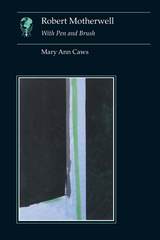
The author bases her analysis of Motherwell on the artist’s own writings and readings, as well as on extensive conversations and interviews with him. She considers his work and interests in relation to those of other Abstract Expressionists as well as to the work of the Surrealists. Her book highlights his deep attraction to France and French literature and art, and his concern with the idea of elegy and the tragedy of the Spanish Civil War. His singularly American spirit provided him with a manner of painting and thinking unique among the Abstract Expressionists, as well as with a distinctive and highly personal filter through which to interpret his fascination with European literature and history.
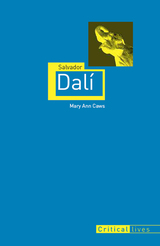
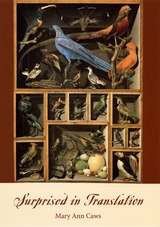
For Mary Ann Caws—noted translator of surrealist poetry—the most appealing translations are also the oddest; the unexpected, unpredictable, and unmimetic turns that translations take are an endless source of fascination and instruction. Surprised in Translation is a celebration of the occasional and fruitful peculiarity that results from some of the most flavorful translations of well-known authors. These translations, Caws avers, can energize and enliven the voice of the original.
In eight elegant chapters Caws reflects on translations that took her by surprise. Caws shows that the elimination of certain passages from the original—in the case of Stéphane Mallarmé translating Tennyson, Ezra Pound interpreting the troubadours, or Virginia Woolf rendered into French by Clara Malraux, Charles Mauron, and Marguerite Yourcenar—often produces a greater and more coherent art. Alternatively, some translations—such as Yves Bonnefoy’s translations of Shakespeare, Keats, and Yeats into French—require more lines in order to fully capture the many facets of the original. On other occasions, Caws argues, a swerve in meaning—as in Beckett translating himself into French or English—can produce a new text, just as true as the original.
Imbued with Caws’s personal observations on the relationship between translators and the authors they translate, Surprised in Translation will interest a wide range of readers, including students of translation, professional literary translators, and scholars of modern and comparative literature.
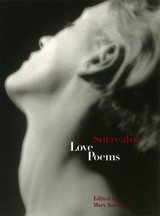
Surrealist Love Poems brings together sixty poems—many of them translated into English for the first time—by Surrealists who charged their work through with all forms of eroticism. Within these pages you will read the magnificent love poems of Desnos, which rank among the greatest in twentieth-century poetry, and hear the voices of lesser known "poets" such as Salvador Dalí and Frida Kahlo. Poems by familiar Surrealists such as Breton, the movement's leader, and Paul Eluard join work by Octavio Paz and Philippe Soupault. Interspersed with the poetry are photographs by Man Ray, Lee Miller, and Claude Cahun. Expertly and energetically translated by Mary Ann Caws, this collection seeks to demonstrate the truth of Breton's words, that "the embrace of poetry like that of bodies/As long as it lasts/Shuts out all the woes of the world."
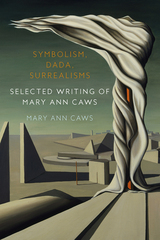
Throughout her long, highly distinguished career writing about literature and art, Mary Ann Caws has excavated, illuminated, and examined in depth the most intriguing works and personalities of Symbolism, Dada, Surrealism, and beyond. In these concise, but always colorful and insightful articles, Caws brings us fresh portraits of the most famous figures and introduces us to the writers and artists who merit more attention than they’ve received, with a special focus on female writers and artists. The author’s sensitivity to the intersections of eccentric literature and eccentric life infuses each critical essay with the human passions that these essential modernists lived. From Dickinson and Mallarmé to Duchamp and Mina Loy, Caws applies the art of close looking to shrewdly framed slices of the modernist experience.
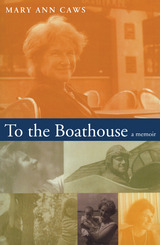
Caws writes of her formal, stylish parents, her rebellious and deeply admired sister, and her artistic grandmother, whom she respected and idolized more than anyone else. She describes her marriage and subsequent divorce, her bouts with therapy, her children, and her growth as a student and writer. Throughout the memoir is evidence of her love for writing, teaching, art, and poetry as well as her deep respect for the people in her life that ultimately guided her into her career.
Mary Ann Caws describes Southern society and her own life with fondness, nostalgia, and a tinge of honest criticism. The carefully selected details and delicate balance of sentiment and fact bring readers into the fascinating, complicated, and all-too-real world of Caws’s—and our own—past.
READERS
Browse our collection.
PUBLISHERS
See BiblioVault's publisher services.
STUDENT SERVICES
Files for college accessibility offices.
UChicago Accessibility Resources
home | accessibility | search | about | contact us
BiblioVault ® 2001 - 2024
The University of Chicago Press





